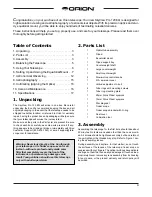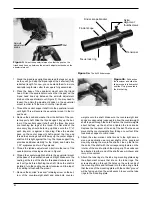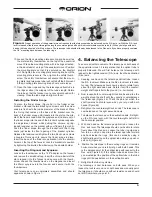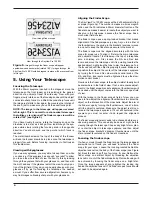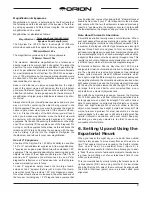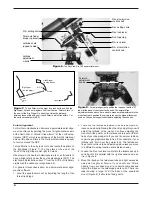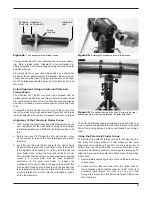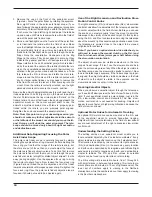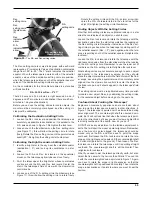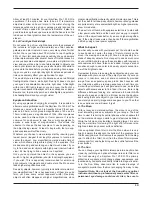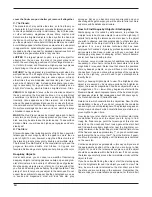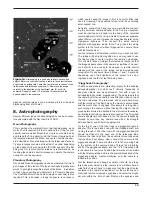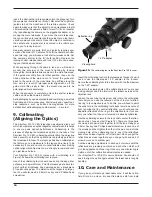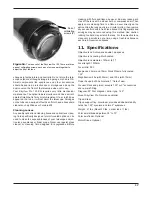
17
changes in temperature and humidity. Do not store the tele-
scope outdoors, although storage in a garage or shed is OK.
Small components like eyepieces and other accessories
should be kept in a protective box or storage case. Keep the
dust cover on the front of the telescope when not in use.
Your SkyView Pro 120 EQ requires very little mechanical
maintenance. The optical tube is aluminum and has a smooth
painted finish that is fairly scratch-resistant. If a scratch does
appear on the tube, it will not harm the telescope. Smudges
on the tube can be wiped off with a soft cloth and a household
cleaner such as Windex or Formula 409.
Cleaning Lenses
Any quality optical lens cleaning tissue and optical lens clean-
ing fluid specifically designed for multi-coated optics can be
used to clean the exposed lenses of your telescope’s objec-
tive lens, eyepieces or finder scope. Never use regular glass
cleaner or cleaning fluid designed for eyeglasses. Before
cleaning with fluid and tissue, however, blow any loose parti-
cles off the lens with a blower bulb or compressed air. Then
apply some cleaning fluid to a tissue, never directly on the
optics. Wipe the lens gently in a circular motion, then remove
any excess fluid with a fresh lens tissue. Oily fingerprints and
smudges may be removed using this method. Use caution;
rubbing too hard may scratch the lens. For the objective lens,
clean only a small area at a time, using a fresh lens tissue on
each area. Never reuse tissues.
11. Specifications
Objective lens: Achromatic doublet, air-spaced
Objective lens coating: Multi-coated
Objective lens diameter: 120mm (4.7")
Focal length: 1000mm
Focal ratio: f/8.3
Eyepieces: 25mm and 10mm Sirius Plössls, fully coated,
1.25"
Magnification: 40x (with 25mm) and 100x (with 10mm)
Finder Scope: 6x30 Achromatic, 7° field of view
Focuser: Rack and pinion, accepts 1.25" or 2" accessories
and camera T-Ring
Diagonal: 90° Star diagonal, mirror type, 1.25"
Mount: SkyView Pro, German equatorial
Tripod: Steel
Tripod support tray: Aluminum, provides additional stability,
holds five 1.25" eyepiece and two 2" eyepieces
Weight: 41 lbs. (Mount 30 lbs., optical tube 11 lbs.)
Polar axis latitude adjustment: 8° to 70°
Polar axis finder: Optional
Motor Drives: Optional
Figure 16.
The lens cell of the SkyView Pro 120. There are three
pairs of collimating screws; each pair of screws work together to
adjust the tilt of the lens.
Pair of
collimating
screws (3)

